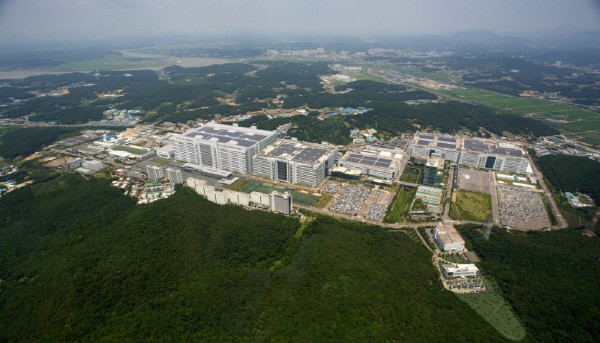The domestic display industry is demanding system improvements to expand the use of renewable energy. Although efforts are being made to reduce greenhouse gas emissions as part of environmental, social and governance (ESG) management, the cost of purchasing renewable energy in Korea is 10 times higher than abroad.
On the 4th, the Korea Display Industry Association announced that it is necessary to improve the renewable energy system in order to strengthen competitiveness with ESG management, such as reducing the cost of power purchase agreements (PPA) and changing the contract method for the green rate systems.
According to the association, the use of renewable energy in the domestic display industry is expected to reach 16.1%this year, which is a 6.2 times increase from last year's 2.6%. This is a result of active implementing ESG management to secure global competitiveness.

However, the renewable energy usage rate in overseas business sites is 42.8%, meanwhile domestic business sites is only 6.8%. This is because the price of renewable energy in Korea is 2.5 to 10 times higher than that of countries where major business sites such as China and Vietnam are located.
In order to utilize renewable energy in Korea, it is necessary to purchase electricity and pay the Korea Electric Power Corporation green premium separately from the existing electricity bill. The issue is that the green rate system only allows one-year contracts through an auction method. There are only 1-2 bids a year. The association proposed the introduction of long-term contracts of five years or more and quarterly bidding so that companies can establish mid- to long-term renewable energy utilization strategies.
Additional costs such as PPA network usage fees are also a heavy burden for companies. PPA is a system in which companies receive electricity through autonomous contracts with renewable energy providers. The unit cost of generating renewable energy is 1.5 to 2.5 times higher than that of nuclear, coal, and hydroelectric power. In addition, KEPCO must pay network usage fees and transaction fees. Incidental costs account for 40 won (23%), of the 176 won per 1kWh of mid- to large-scale solar power generation.
The association proposed lowering all costs to revitalize the PPA system. It also proposed policy support measures such as special unit prices, investment tax credits, and corporate tax cuts to resident companies by establishing a new and renewable energy special zone.
An official from the display industry said, "We need incentives to strengthen global competitiveness since we voluntarily use renewable energy to participate in carbon neutrality."
Last year, Samsung Display (6.78TWh) and LG Display (6.23TWh) ranked 4th and 5th respectively in terms of electricity consumption bydomestic companies. Power consumption is increasing as factories operate 24 hours a day, and there is a conversion from liquid crystal display (LCD) to organic light emitting diode (OLED). OLED power source unit (power used to produce one product) is 4.5 times higher than that of LCD.
Accordingly, the display industry is practicing carbon neutrality and striving to strengthen its global competitiveness. In a keynote speech at the International Meeting on Information Displayheld last month, Samsung Display CEO Joo-seon Choi emphasized the importance of ESG and announced efforts to reduce greenhouse gas emissions.
LG Display also revealed its commitment to ESG management with its sustainability report, which includes minimizing greenhouse gas emissions and switching to new and renewable energy.
As a result, the display industry reduced greenhouse gas emissions by 24.7% (3.08 million tons) in 2020 compared to 2015.
“It is time for the display industry to gain global competitiveness with ESG management, with not only expanding the use of renewable energy, but also producing low-power products and recycling 100% of waste,” said Dong-wook Lee, vice president of the Korea Display Industry Association, adding that “It is necessary to expand the government’s renewable energy adoption support policy and establish a carbon-neutral system from a macro perspective.”
Cost of purchasing major national renewable energy certificates (REC, i-REC, GEC)
(Unit: KRW/kWh)
Renewable energy usage rate in the domestic display industry this year
Source: Korea Display Industry Association


By staff reporter Yoon-sub Song (sys@etnews.com)